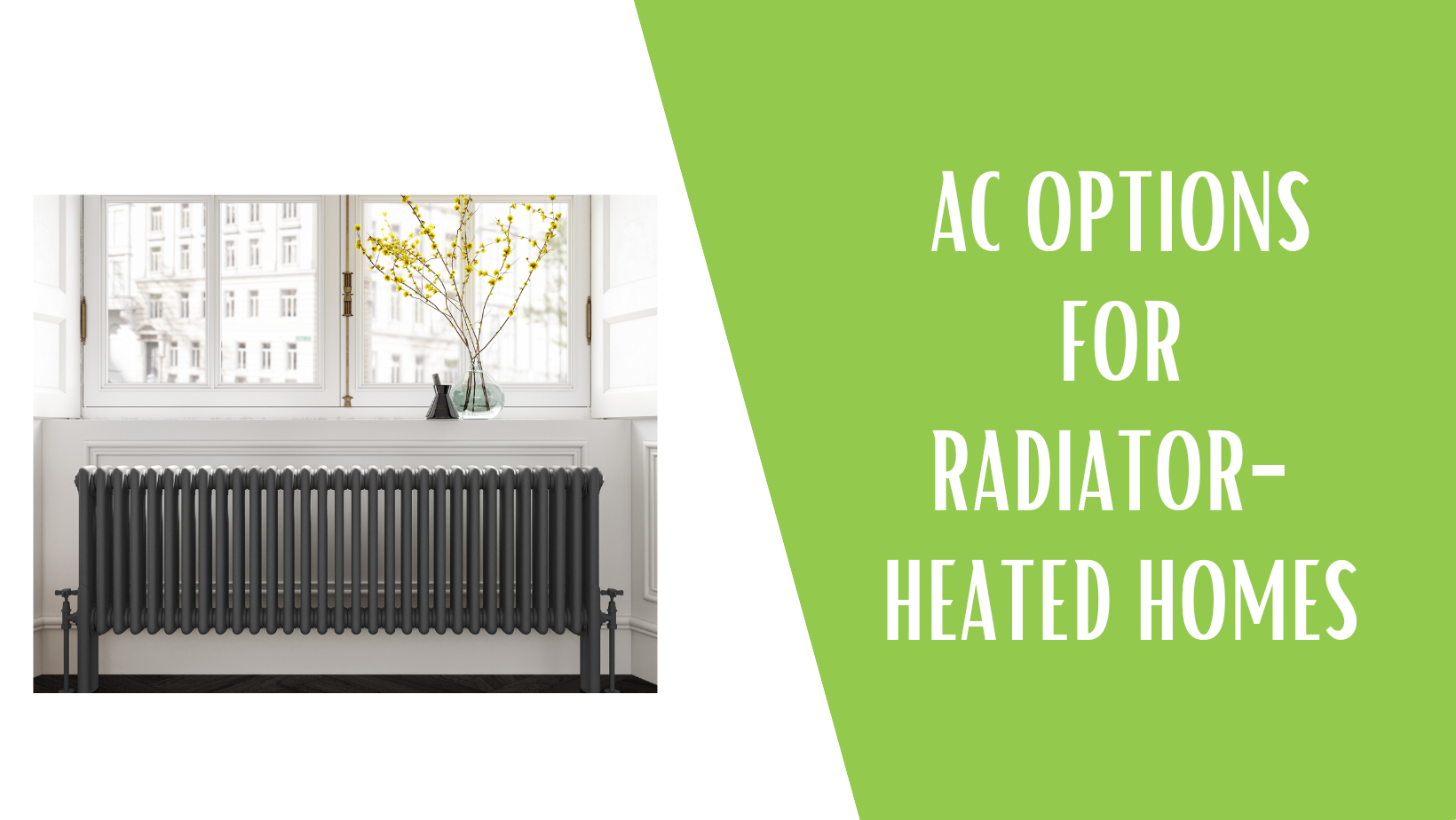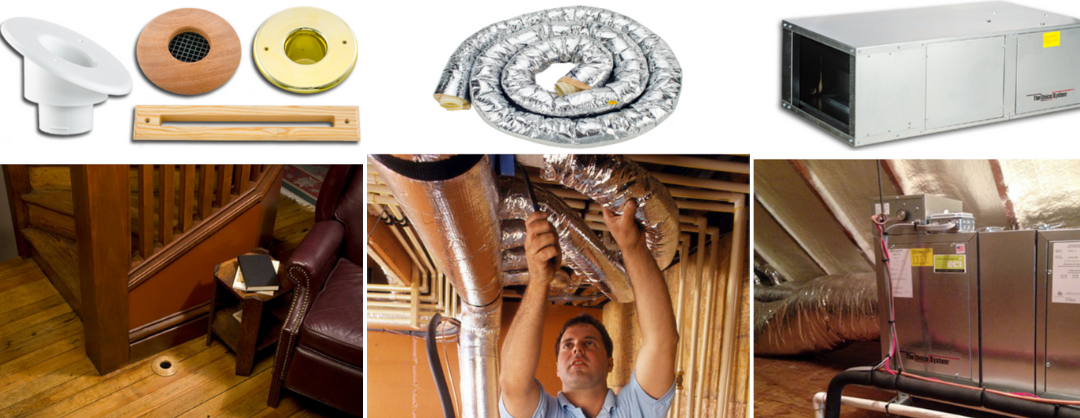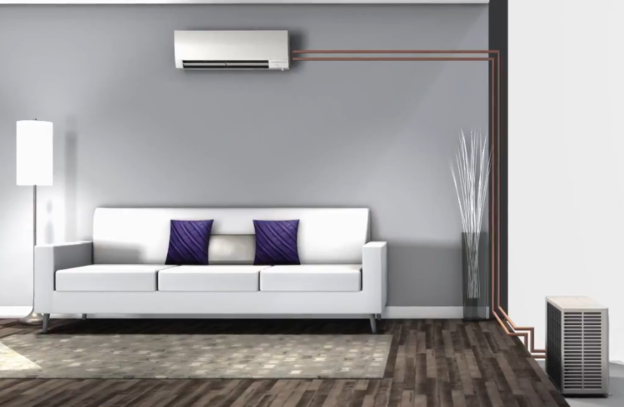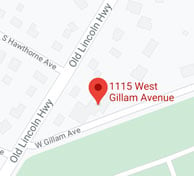Radiators are wonderful for heating your home and keeping you warm throughout the winter. Put simply, radiators work by using a boiler system that heats up water which is sent through pipes that connect to the radiators around your home. Unfortunately, this means there's no ductwork, which can make it difficult to add air conditioning to your home.

Homes with furnaces rely on ductwork, rather than pipes, to send warm air throughout the home. This makes it easier to add a central air conditioning system that also utilizes the ductwork to send cooled air to each room. Lack of ductwork in radiator-heated homes can cause challenges when it comes to adding air conditioning.
Fortunately, you don't have to settle for loud, ugly window air conditioners or portable AC's. In addition to the option of adding traditional ductwork in your home, you can also opt for ductless mini-splits or a small-duct high velocity system. We'll review how each option works and the main pros and cons of each.
1. Install Ductwork
:no_upscale()/cdn.vox-cdn.com/uploads/chorus_asset/file/19521222/ducts.jpg) If you're interested in a conventional central air conditioning, you can have ductwork installed in your home. You will of course need professionals to build an optimized duct system, but also determine the right sized air handler. A unit that is too big or too small for your home will decrease your comfort and the system's efficiency. Pricing will depend on the type of unit, the size of the home/the ductwork needed, and the size of the unit.
If you're interested in a conventional central air conditioning, you can have ductwork installed in your home. You will of course need professionals to build an optimized duct system, but also determine the right sized air handler. A unit that is too big or too small for your home will decrease your comfort and the system's efficiency. Pricing will depend on the type of unit, the size of the home/the ductwork needed, and the size of the unit. Pros
A major upside of adding central air conditioning is better indoor air quality. In addition to providing cool air in every room, the AC functions as a whole-home filtration system. The blower in a central air system turns over the entire volume of household air multiple times every day. As the air circulates through the ductwork, the system continuously filters airborne contaminants such as dust, allergens, pet dander, and other irritants.
Conventional central AC systems are also great for bigger homes or homes with less open floor plans, as the ductwork can be extended to every room. On the contrary, a ductless system would require adding an air handler to every room. Plus, the ductwork is hidden behind the walls and the air handler is usually tucked away in an attic, basement, or closet.
Cons
While adding a central air conditioning system has its advantages, it's also a very invasive process. Adding ductwork requires lots of space, and walls and ceilings will need to be torn open. This process can be lengthy and expensive, and may not be worth it if you aren't already renovating the home or staying in the home for a long time. Additionally, a conventional system is usually not as efficient as a ductless or high velocity system.
2. Small-Duct High Velocity Systems
 High velocity systems also utilize ductwork, but on a smaller scale. The indoor components of a high velocity system consist of an air handler that easily fits in an attic or closet, and supply tubing that connects the air handler to the round or slotted outlets that deliver conditioned air throughout the home. These small-duct systems can fit anywhere and provide great long-term value.
High velocity systems also utilize ductwork, but on a smaller scale. The indoor components of a high velocity system consist of an air handler that easily fits in an attic or closet, and supply tubing that connects the air handler to the round or slotted outlets that deliver conditioned air throughout the home. These small-duct systems can fit anywhere and provide great long-term value.Pros
High velocity systems are unique because they use the process of aspiration. While a conventional system simple sends air through the vent into the room, high velocity systems quickly send air out of the small outlets and circulate it throughout each room, eliminating drafts and cold spots. These systems are also very efficient which leads to greater comfort and energy savings.
Because of the small tubing, high velocity systems can fit anywhere. They are less invasive than standard AC systems and can be installed in older homes where traditional ductwork wouldn't fit. Unico high velocity systems have great humidity control as well, removing 30 percent more humidity than conventional central air systems. Not only does this increase your comfort, but it allows you to set your thermostat higher and save more money.
Cons
High velocity systems are the most expensive of three options. Cost depends mainly on the complexity of the installation, as well as other factors like the type of home. If you don't plan on staying in your home for a long time, a high velocity system may not be worth the investment.
3. Ductless Mini-Split Systems
 Ductless mini-split systems, as you may have guessed, don't require any ductwork to be installed. Air handlers in the form of high-wall units, low-wall units, or ceiling cassettes are placed in each room that needs cooling. The air handlers are connected to the small outdoor unit through small line sets in the wall.
Ductless mini-split systems, as you may have guessed, don't require any ductwork to be installed. Air handlers in the form of high-wall units, low-wall units, or ceiling cassettes are placed in each room that needs cooling. The air handlers are connected to the small outdoor unit through small line sets in the wall.
Pros
Ductless systems are extremely versatile in that they can cool your whole house, multiple rooms, or just one room/addition. You can even start with just a few indoor units and add to the system later on, as multiple air handlers can be connected to one outdoor unit. Moreover, ductless systems are the easiest to install of the three options. Because they are non-intrusive, ductless systems are perfect for older homes and historical homes where it's important to maintain integrity.
Ductless mini-splits are also useful for zoning and for homes with more open floor plans. Because each air handler is controlled separately, you can have varying temperatures from room to room.
Another major benefit is that ductless heat pump systems provide both cooling and heating. A heat pump can supplement your existing boiler system or provide warmth during the milder seasons when a boiler isn't necessary yet. This also goes hand-in-hand with the fact that ductless systems are the most efficient and can help you save on energy bills.
Cons
Ductless systems can be pricey, especially if you have a larger home. The cost will mainly depend on the number of outdoor units, the number of indoor units, and the type/size of the indoor units.
Multiple zones/indoor units may also be cumbersome if you want uniform temperatures across the home. Because each air handler is individually controlled, you have to change the temperature on each one rather than adjusting one or two thermostats for a central AC system.
Ductless units may not be aesthetically pleasing to some, either. While a ducted system is hidden behind the walls, these air handlers are visible on the walls/ceilings in each room.
If you live in the Delaware Valley/Greater Philadelphia area and would like to find comfort within your home, visit our website or give us a call at 215 - 245 - 3200 to learn more.





